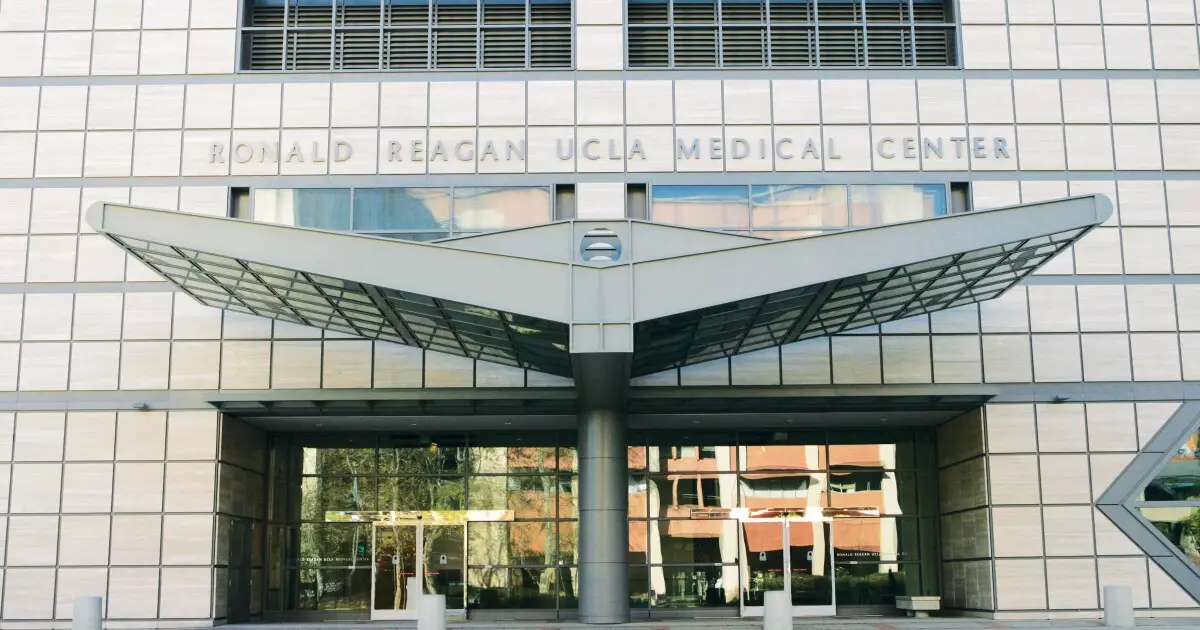In the complex landscape of American higher education, recent federal policy proposals have cast a long, dark shadow. The looming Medicaid cuts embedded within the federal budget reconciliation package are not merely budget adjustments—they are an aggressive strike against both public health infrastructure and the financial stability of universities. As an analyst from Moody’s succinctly summarized, these measures threaten to inflict substantial credit negative consequences on the sector, pushing many institutions toward a precarious edge. The gravity of this situation extends beyond mere headlines, exposing the fragile intertwining of healthcare policy, university finance, and broader societal stability.
Universities—especially those with significant health care operations like the University of California—operate at the intersection of education and medicine. Any reduction in Medicaid funding directly diminishes the revenue streams of university-affiliated hospitals and clinics, which serve as critical lifelines for low-income populations. The threat isn’t isolated; it triggers a chain reaction, potentially forcing these institutions to grapple with budget shortfalls, staff layoffs, and cuts to essential services. When the primary revenue source for these university medical centers shrinks, their capacity to function effectively is under threat, jeopardizing the health of entire communities reliant on their care.
Furthermore, the federal aim to slash Medicaid expenditures by nearly a trillion dollars over a decade introduces a broader fiscal crisis. This strategy—ostensibly designed to trim the federal deficit—ignores the unintended fallout: millions of individuals on the brink of losing healthcare. The political motivations behind these cuts seem rooted in ideology rather than sound economic or social policy, disregarding the essential role that Medicaid plays in supporting public health and economic stability. If hundreds of thousands of Americans lose access to care, the ripple effects will inevitably touch universities—particularly those providing training and specialized healthcare services—potentially hampering medical education and research.
States Caught in the Crossfire
The damage inherent in federal cuts doesn’t stay confined within Washington’s boundaries. States, often beholden to federal funding and policy, will feel compelled to tighten their belts further. When the federal government withdraws support, states face difficult choices: reduce public spending, cut back on higher education funding, or both. The intertwined nature of state and federal funding means that universities across the country could face a downward spiral of financial stability, leading to delayed projects, diminished programs, or even closures.
Particularly vulnerable are public institutions like California State University and the University of California system, which rely heavily on state support and Medicaid reimbursements. While UC’s exposure is somewhat buffered by its diversified revenue streams—such as patient care and research grants—the CSU system, with about 40% of its revenue from state funds, will face sharper hits. As state budgets falter, these institutions risk falling behind in their mission to provide accessible education to a diverse student body, ultimately undermining the promise of upward mobility that higher ed traditionally championed.
More concerning is the potential for these financial pressures to push universities into a defensive stance, where they prioritize cost-cutting over innovation, diversity, or accessibility. Rigid budgets might result in fewer research grants, higher tuition, or the closure of less profitable programs—all of which run counter to the nation’s broader economic and social interests.
The Broader Financial Conundrum
The crisis extends into the bond markets—an often overlooked dimension of institutional sustainability. University and healthcare bonds, once perceived as relatively secure investments, are increasingly under scrutiny. Moody’s and Fitch warnings about the sector’s credit outlook reflect mounting anxiety about a landscape where reduced revenue could jeopardize debt repayment. Borrowing, which has historically supported expansion and innovation, becomes a riskier proposition, further exacerbating financial strain. With bond ratings remaining stable only through complex pooled revenue structures, the very foundations of higher education’s fiscal model are now being challenged.
In addition, private endowment policies are shifting under the weight of increased taxation. The new excise tax on large endowments—targeting wealth held by elite private institutions—acts as a punitive measure that fundamentally alters fundraising and investment strategies, reducing the capacity for universities to sustain their long-term research and educational missions. Though smaller schools may benefit from the higher thresholds, the broader climate of fiscal hostility discourages philanthropic generosity and hampers the sector’s resilience.
The political atmosphere only intensifies these issues. Threats to tax-exempt status, as exemplified by recent disputes involving Harvard, and increased taxes on investment income threaten to undermine the very financial backbone that sustains these institutions. Such measures, driven by ideological motives rather than sound fiscal management, will only deepen the sector’s precarious financial position.
The End of Unfettered Growth and the Rise of Uncertainty
The overarching theme is clear: the era of unchallenged growth and stability in higher education is drawing to a close. Enrollment declines, combined with declining state and federal support, have already strained institutions. Federal policy shifts—particularly healthcare cuts—act as accelerants, exacerbating financial concerns and risking institutional viability.
Particularly troubling is the increase in bond spreads among higher-rated universities, signaling a market wary of future stability. The once-reliable perception of higher education bonds as a safe investment now faces serious questions as institutions teeter on the brink of fiscal turbulence. This environment fosters a climate of caution, where universities may have to settle for grudging borrowing terms or face outright financial crises.
In this confluence of policy, market, and societal forces, the higher education sector faces a stark reality: without decisive reforms and protections against political short-sightedness, many institutions and healthcare providers will struggle to sustain their missions. The coming years will test the resilience of the academic world—fundamentally reshaped by federal policies that prioritize deficits and ideological battles over the core values of access, innovation, and national health.

